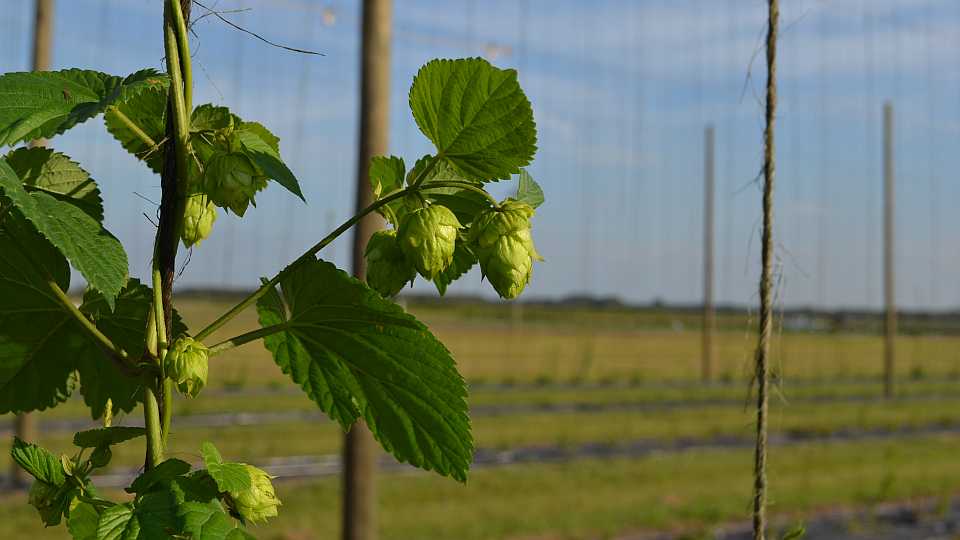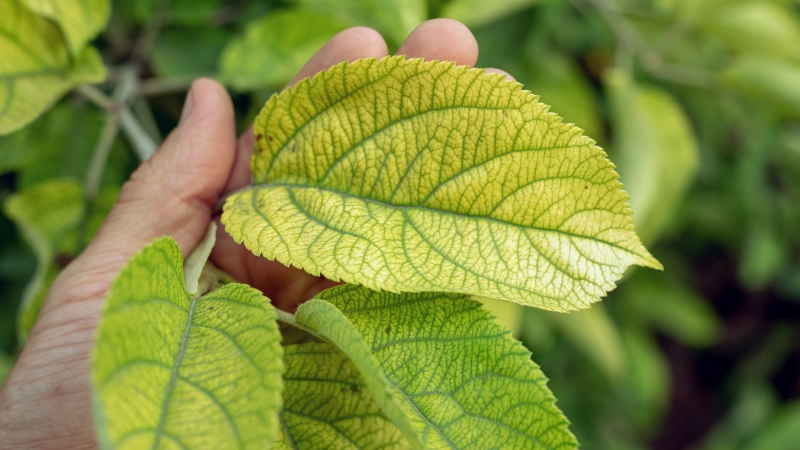USDA to Investigate Vernalization in Florida-Grown Hops

When it comes to hop production, Florida is unique — especially compared to its Pacific Northwest counterparts aided by idyllic daylength and climate. Without a traditional dormancy period, how are Florida hop plants and product affected in terms of overall quality and quantity? New research is looking into vernalization impact on hop plants produced in the Sunshine State. Photo by Paul Rusnak
Hops have been of increasing interest in the last few years for Florida growers, in an attempt to diversify with alternative crops, and meet demand of one the nation’s fastest growing craft beer industries for locally produced agriculture products. Production of hops is generally concentrated in Pacific Northwest in the states of Washington, Oregon, and Idaho, which combine to produce nearly all of the U.S. hop crop. Less than several thousand acres exist outside this region.
It is known hops benefit from longer daylengths of more northern latitudes than exist here in Florida. The shorter days cause earlier flowering and subsequently, lower yields, but also multiple harvests. This creates substantial interest into producing an out-of-season crop.
A condition also present in northern latitudes that significantly lacks in Florida’s environment, are prolonged periods of cold temperatures reaching below 38⁰F, at which dormancy is believed to be induced for hops. Very little research has been conducted in regard to the effect of a reduced or even non-existent dormancy period on growth, production, and life of the hops plant, particularly in Florida’s environment.
Anecdotal evidence suggest hops need a minimum of a 6-week period of temperatures sustained at 38⁰F in order to enter into dormancy and prepare for growth and flowering in spring, a process not fully understood, but is known as vernalization.
Vernalization response and requirements are largely dependent on hop variety. Reaction by hop plants to inadequate cold periods could be uneven shoot emergence in spring, improper cone setting at bud initiation, delayed harvests, and reduced yields, let alone the impact on alpha and beta acids.
Researcher William Turecheck of the USDA Agriculture Research Service Horticulture Research Laboratory in Ft. Pierce, FL, is investigating the effect of vernalization through a comparison study between hop plants exposed to cold periods and others to conditions of a Floridian climate, accented with characteristically mild winters.
Turecheck has previously conducted research on the effect of photoperiod manipulation on hops, finding that by extending day length exposure, their hop plants increased flower production many times that of plants without supplemental lighting.
Turecheck is now hoping to follow that breakthrough with his study on vernalization, a factor of production which has not been thoroughly investigated in nearly 40 to 50 years. By better understanding the impact of vernalization issues on growth, yield, and longevity of hops, growers will be strengthened with knowledge that has not been previously available and may have a direct impact on Florida’s burgeoning hop industry.










